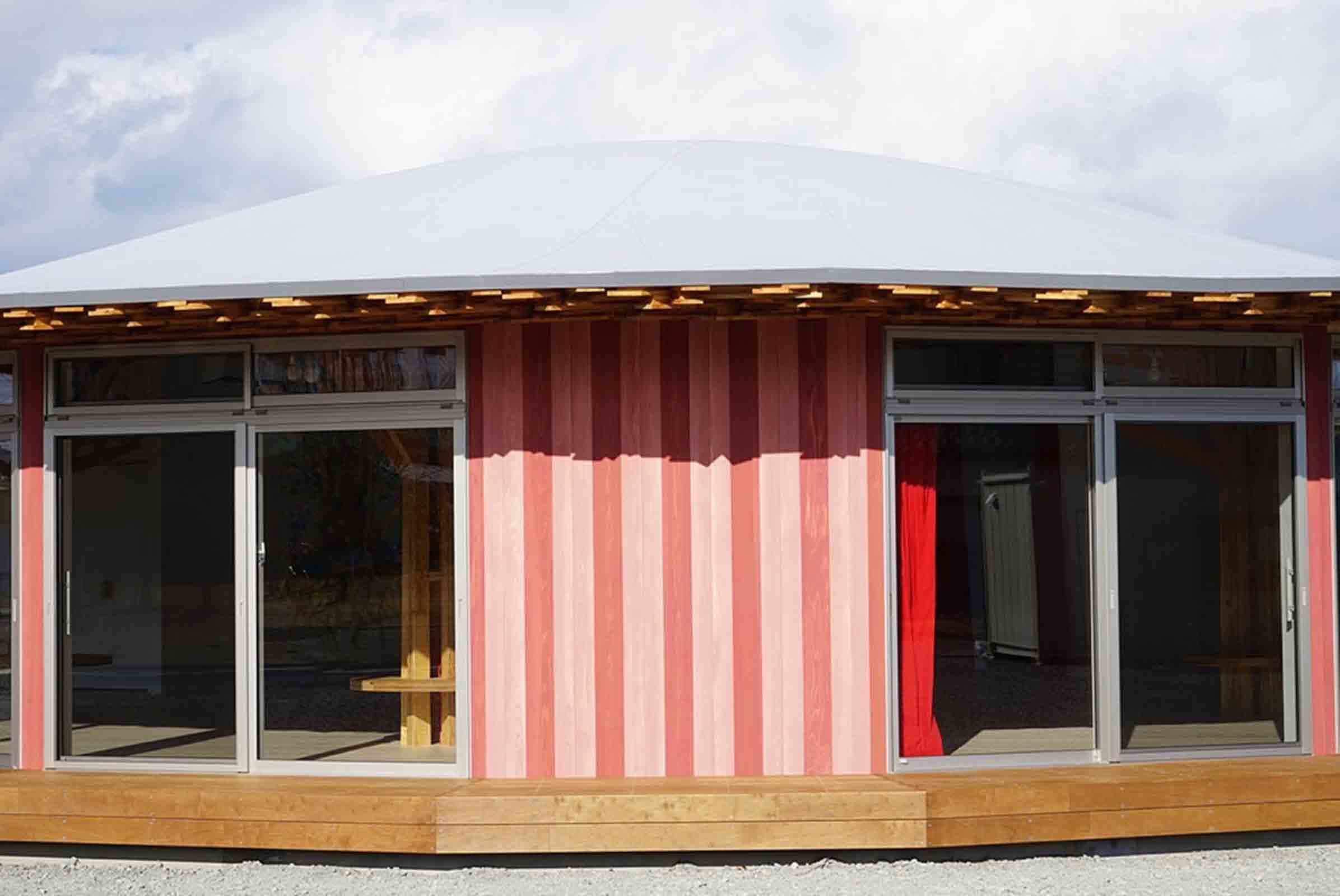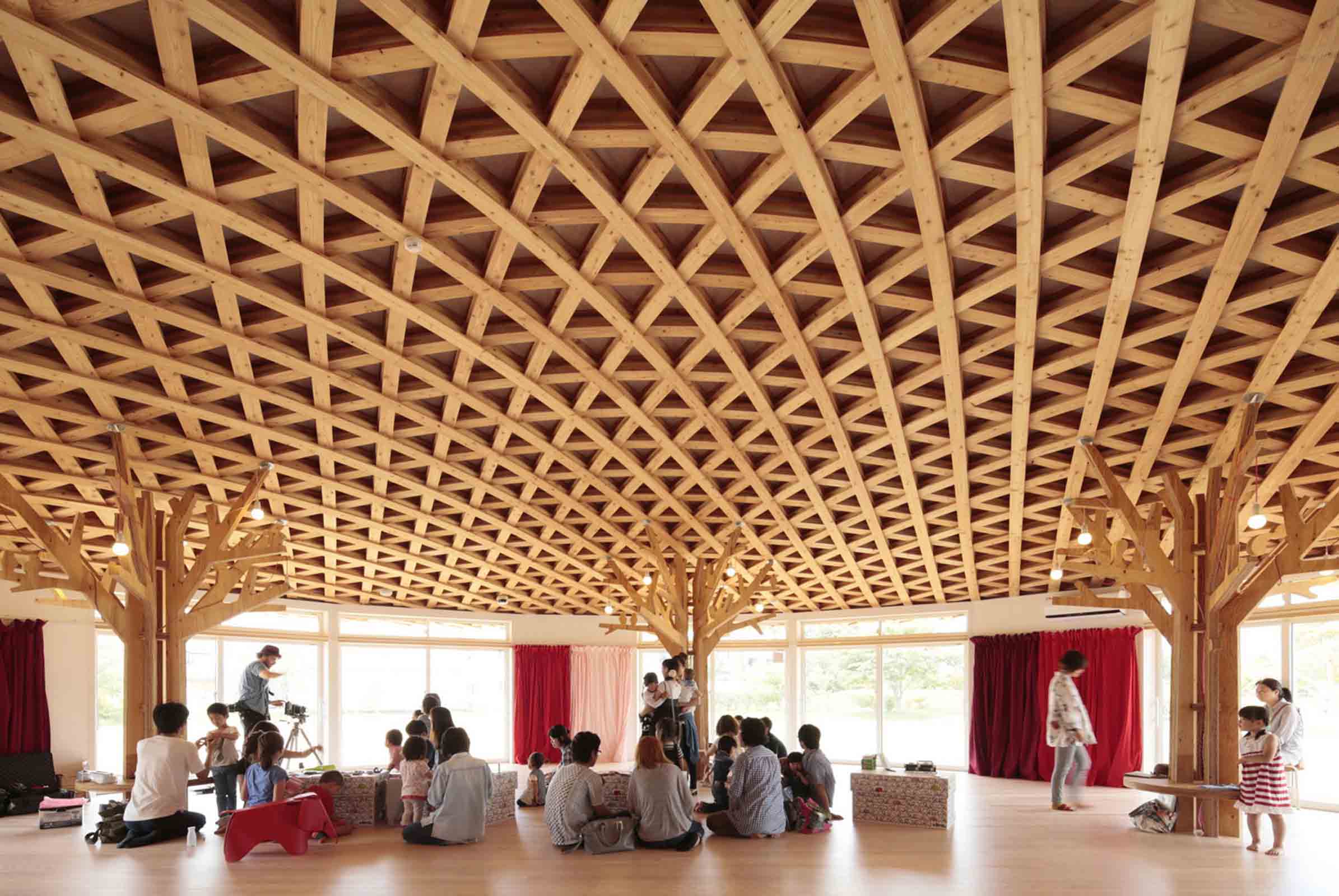A Home for All

A conversation with Mark Dytham of Klein Dytham architects about how he first came to Japan, what keeps him there and his studio's humanitarian work
How did you first come to Japan?
It was in 1988. After six years of education I didn’t really want to go straight into an office, and at that time the bubble was blowing up in Tokyo and you’d see all these magazines, all these really great things happening and here I was in London working for SOM on fine arts commissions and town-planning. And it was all very planning-driven. So Astrid [Klein] and I both applied for and won a travel scholarships, so with 2500£ each we went off to Japan for three weeks, then three months and just never really came back.
How did you come to work for Toyo Ito then?
Well we wrote to ten architects before we left, which was a really difficult thing to do back then because there wasn’t any internet and it took forever to find peoples’ addresses and write to them. In the end, what happened was that someone at SOM knew David Chipperfield, who at the time was doing a project in Japan, so that’s how we started to piece it all together — from a lunch with David Chipperfield we began to piece together some business cards and different things ... it’s so different today how you do this!
So that was a struggle, and we sent out portfolios to everyone and no answer, nothing came back. It was definitely a language barrier issue, but our friend told us to just tell them what day and at what time we would ring up, and it’s scary, but we also had nothing to lose. And we saw everyone — we saw Isozaki, we saw Kenzō Tange’s office, we saw Fumihiko Maki. Everybody found time to meet with us — isn’t that amazing! That would never have happened in the West.
So we met Toyo Ito and he said he had a project to show us and we ended up getting an interior project. We’d just graduated the royal college of art, come to Japan and Ito-san sort of just gave us this job. So we had our own project within the office.
How old were you at the time?
Twenty-four. But at that point, no one really knew who Toyo Ito really was. I mean, we’d seen White u and Silver Hut and the Tower of Winds — they were the three projects that we knew. It was very difficult to work in the office then with the language barrier, but we just had to get our project done.
Do you speak Japanese now?
[says something indiscernible in Japanese] It’s ninety per cent now.
We do run the office in Japanese, but with a lot of overseas clients, we do make sure everyone in the office has a certain proficiency in English.
How long did you stay working with Toyo Ito?
Basically about three years. And then we had a lucky break. Someone offered us a job renovating a building, which they don’t normally do in Japan, but they felt that because we’re British, we’d be quite good at renovating and it was quite a large project. And off we went. That particular client was a guy called Kurisaki-san, who was also employing Zaha Hadid at the time. That was the first thing that really got us going then, in 1996.
But 1996 is still twenty years ago, and you’ve decided to stay in Japan since. What’s it like having a practice in Japan? What is it that keeps you there and what do you love about it?
There’s a general positivity and openness to newness. Everyday you’ll see something new or inventive; they like new things. Take Kit Kat for example. I have a Kit Kat collection and I must have one hundred and fifty different flavours by now: apple, pineapple, sakura blossom and even regional flavours and sake flavours. It’s that newness, whereas the Kit Kat never changed in England.
So when we want to use a new material in Japan, everyone gets super excited about it, whereas in the West, if it’s not been used before everyone’s a bit scared. But in Japan, it’s like ‘No one’s used it — let’s have a go!’. That’s the difference. And you see that a lot, everyone’s trying out new things.
Can you tell us a bit about your Home for All Project?
We’ve built fourteen homes in Kumamoto, where they had an earthquake and tsunami a year and half ago. The government had originally built seventy houses, and then we came in and built these sort-of acupuncture points all around, all on our own without any governmental support. Now the government has come to us and said, ‘Can you build the remainder of the four thousand homes?’ The government is paying for the construction and of course we’ve done the design for free. We got some younger architects as well now to work on those, which is really cool.
The key thing is that the architecture really does make a difference. It gives a sense of pride and the people feel less forgotten about. People come and look at the building and hang out and have a drink and there’s a whole community that’s being built around the architecture. It’s like the Bilbao effect but much more localised — and modest.
It’s fun while not shouting. We try to keep all the egos out of the project. And that’s why it took us a long time. We waited to be invited by the community because this wasn’t meant to be about us, and a bit of healing need to go on with before you could come in — over two hundred kilometres of coast were wiped out.
But through this all, this positivity has come out of it. All these towns are sort of bustling and there’s a lot of interest in these centres. It’s almost like pruning a rose — somehow out of this all this new life has appeared. So people are moving back and now there’s some small art communities popping up and other architects are doing interesting work there.
And now the local government has finally gotten around to building new homes, away from the danger of the Tsunami planes, but people don’t want to move out of the Home for All. They kinda like them! They’ve hung out there and it’s their new community.
As told to / Jessica Vahrenkamp











